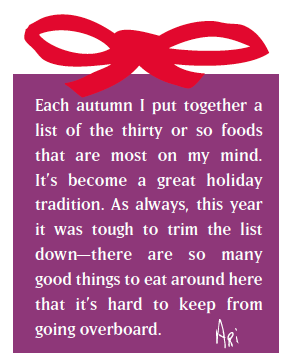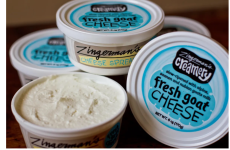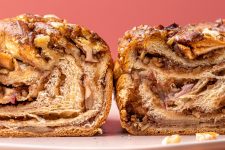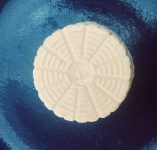Ari’s Holiday Gift Suggestions

Stay tuned as we post selections from Ari’s list in the coming weeks!
Two Terrific Pastas
Filotea Egg Pasta
from the Marche
A delicious newly arrived egg pasta from the Marche (pronounced “Mar- kay”) region on the east coast of Italy. It’s made from an old family recipe: owner Antonio Lupini’s grandmother used to add a small percentage of white flour in with the more typical semolina that everyone in the area uses. The family relies heavily on fresh eggs as well—nearly a third of the pasta’s weight is accounted for by fresh eggs that come from a farm five kilometers from the pastaficio. Like the other artisan pastas we carry, the surface of the Filotea egg pasta is very rough, meaning that it holds sauce much better than standard commercial offerings. It also holds its texture after its been cooked al dente and then sauced, not an easy thing to pull of with an egg pasta. Serve it with butter and cheese, with a simple tomato sauce, or with a bit of meat ragu. Whatever you do with it it’s pretty surely going to be delicious.
Cavalieri Whole Wheat Pasta from Puglia
Down in the town of Lecce, in the region of Puglia (in the heel of the Italian boot) Benedetto Cavalieri con- tinues to craft exceptional pasta as his family has done since the early 20th century. The Cavalieri family actually started in the area as wheat farmers in 1872. Only later, in 1918 as WWI was winding down,did they move into pasta making. With over ninety years of making pasta in the same spot it’s no surprise that the place is something like a pasta fun house. The whole place is put together in this intricate patchwork. But it’s put together in a way that works. People climb up narrow stairs and down ladders. Archways abound in the storeroom where 300-plus sacks of grain stand ready to be put into mixers.
Speaking of grain, the Cavalieri’s use primarily old varieties of low yielding, full-flavored hard durum wheat grown in the hills of the region. On the package Sr. Cavalieri appropriately shares the credit for the quality of his pasta with “the farmer and the miller.” Without great wheat, he points out, the pasta maker is helpless. Ever wondered why different cuts of pasta from the same producer can be notably different? Sr. Cavalieri has a different blend of grains and different dough for each cut of pasta that he makes.
The mixing is done in a six by six foot hopper mounted on a metal platform. Although it makes the dough harder to work and requires extended time for mixing and extruding, Sr. Cavalieri insists on using only room-temperature water to protect the gluten, lysine, and character of the wheat. To the same end the mixers are lined with aluminum, again to help reduce heat. The dough in turn is pushed through the old-style bronze dies mounted onto the front of the extruding machines.
The dough falls out of the dies onto a small conveyer belt and from there it moves to the drying rooms. They have a different dryer for each shape and size. The wooden drying cabinets were built in 1936. They’re “the only machine that will dry the short shapes” the way Sr. Cavalieri likes. He takes his time with the drying; thirty six hours for the short cuts, and just under two very deliberate days for the longer pasta shapes. The drying is done at about 100°F, roughly half the temperature employed by speed-oriented industrial pasta makers. The key, Sr. Cavalieri explains gesturing with his hands is “not to shock the pasta” to protect its nutritional value, texture and flavor.
As with Martelli or Rustichella, when you drop the Cavalieri pasta into boiling water you’ll be struck by the wheaty aroma that rises from the pot. And you will truly be able to taste the difference. Which leads me to the most recent arrival on our shelves from the Cavalieri family—by far the tastiest whole wheat pasta I’ve ever had.
In honesty, I generally don’t like whole-wheat pasta that much. It usually lacks the chewy texture and fine flavor that I love about artisan pastas from Italy. But through some secret the Cavalieri’s aren’t quite ready to divulge, this one is different. It tastes great. Its texture is terrific—you can cook it al dente and it holds its integrity long after it’s cooked. I’ve been preparing it in pretty much every manner you can imagine—tomato sauce, with cheese, with tuna and roasted peppers—and all have proven excellent.
We’ll continue to post excerpts from Ari’s list over the next few weeks.
You can download the entire list in the November/December Newsletter!





Zingerman’s Art for Sale